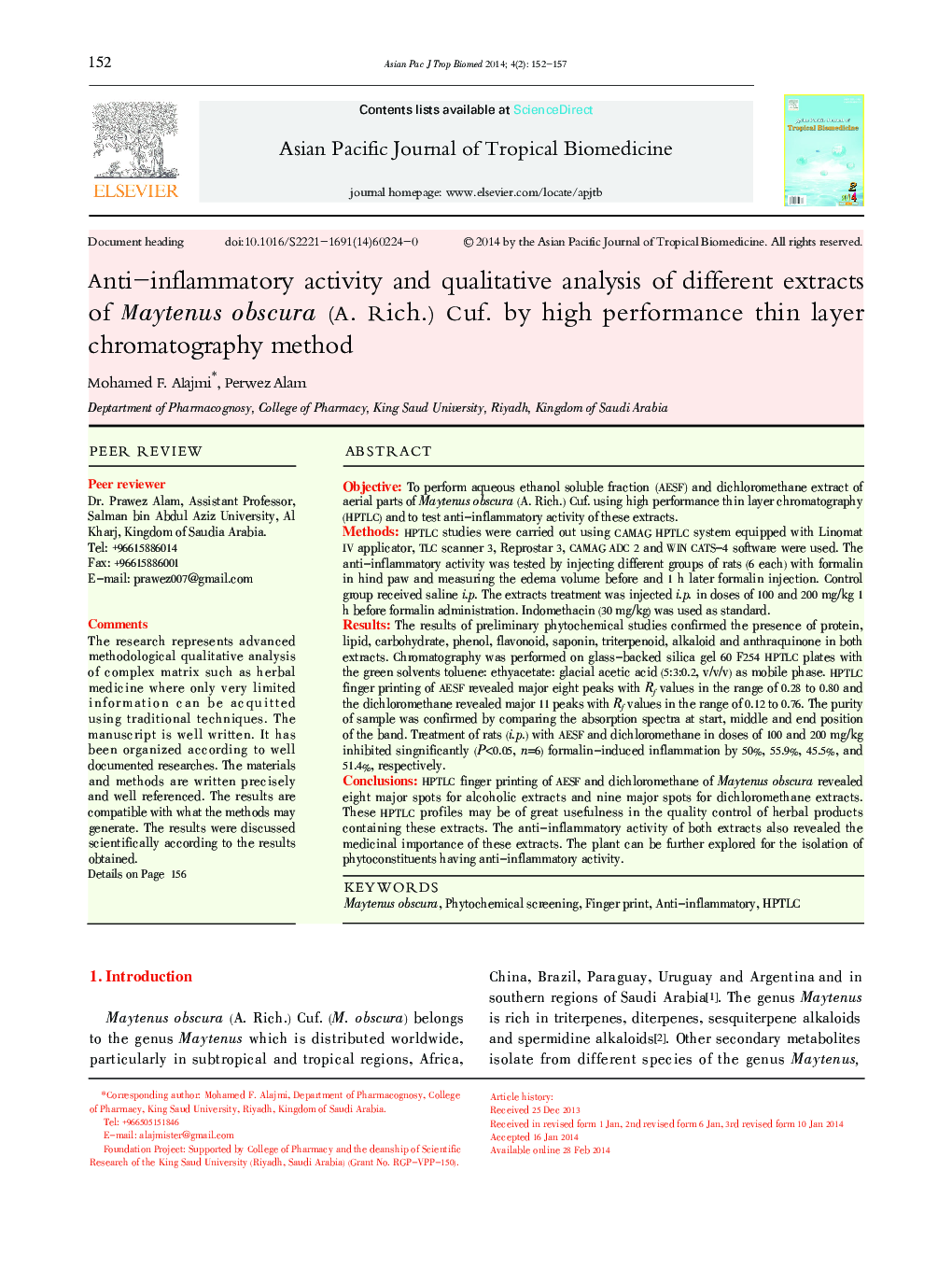| کد مقاله | کد نشریه | سال انتشار | مقاله انگلیسی | نسخه تمام متن |
|---|---|---|---|---|
| 2032704 | 1542892 | 2014 | 6 صفحه PDF | دانلود رایگان |

ABSTRACTObjectiveTo perform aqueous ethanol soluble fraction (AESF) and dichloromethane extract of aerial parts of Maytenus obscura (A. Rich.) Cuf. using high performance thin layer chromatography (HPTLC) and to test anti-inflammatory activity of these extracts.MethodsHPTLC studies were carried out using CAMAG HPTLC system equipped with Linomat IV applicator, TLC scanner 3, Reprostar 3, CAMAG ADC 2 and WIN CATS-4 software were used. The anti-inflammatory activity was tested by injecting different groups of rats (6 each) with formalin in hind paw and measuring the edema volume before and 1 h later formalin injection. Control group received saline i.p. The extracts treatment was injected i.p. in doses of 100 and 200 mg/kg 1 h before formalin administration. Indomethacin (30 mg/kg) was used as standard.ResultsThe results of preliminary phytochemical studies confirmed the presence of protein, lipid, carbohydrate, phenol, flavonoid, saponin, triterpenoid, alkaloid and anthraquinone in both extracts. Chromatography was performed on glass-backed silica gel 60 F254 HPTLC plates with the green solvents toluene: ethyacetate: glacial acetic acid (5:3:0.2, v/v/v) as mobile phase. HPTLC finger printing of AESF revealed major eight peaks with Rf values in the range of 0.28 to 0.80 and the dichloromethane revealed major 11 peaks with Rf values in the range of 0.12 to 0.76. The purity of sample was confirmed by comparing the absorption spectra at start, middle and end position of the band. Treatment of rats (i.p.) with AESF and dichloromethane in doses of 100 and 200 mg/kg inhibited singnificantly (P<0.05, n=6) formalin-induced inflammation by 50%, 55.9%, 45.5%, and 51.4%, respectively.ConclusionsHPTLC finger printing of AESF and dichloromethane of Maytenus obscura revealed eight major spots for alcoholic extracts and nine major spots for dichloromethane extracts. These HPTLC profiles may be of great usefulness in the quality control of herbal products containing these extracts. The anti-inflammatory activity of both extracts also revealed the medicinal importance of these extracts. The plant can be further explored for the isolation of phytoconstituents having anti-inflammatory activity.
Journal: Asian Pacific Journal of Tropical Biomedicine - Volume 4, Issue 2, February 2014, Pages 152–157